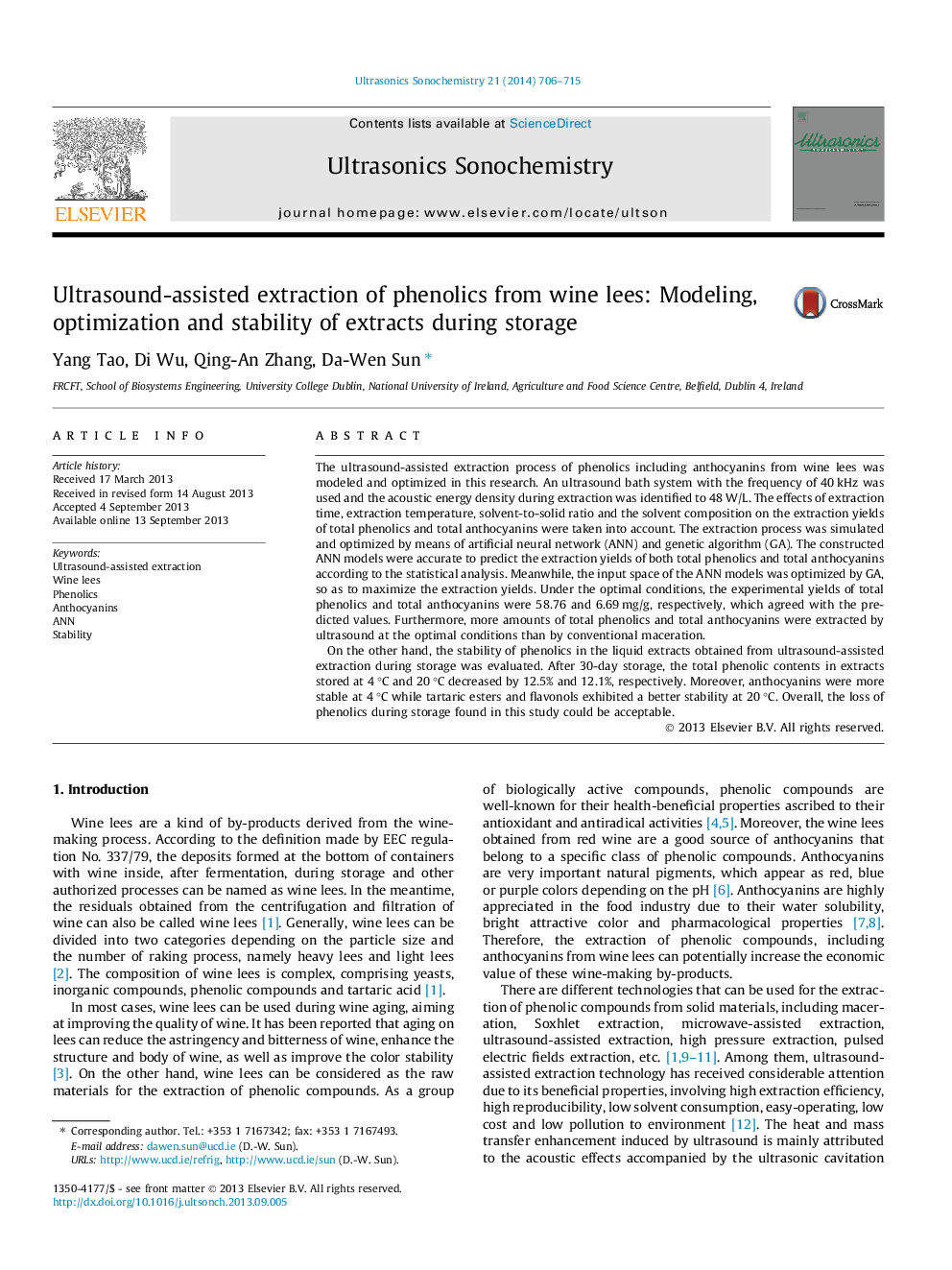| Article ID | Journal | Published Year | Pages | File Type |
|---|---|---|---|---|
| 1265150 | Ultrasonics Sonochemistry | 2014 | 10 Pages |
•Ultrasound of 40 kHz was used to extract phenolics from wine lees.•ANN models were accurate to simulate the extraction process.•The maximum extraction yields were achieved through the ANN–GA approach.•Some losses of phenolics in the extracts during storage were found.
The ultrasound-assisted extraction process of phenolics including anthocyanins from wine lees was modeled and optimized in this research. An ultrasound bath system with the frequency of 40 kHz was used and the acoustic energy density during extraction was identified to 48 W/L. The effects of extraction time, extraction temperature, solvent-to-solid ratio and the solvent composition on the extraction yields of total phenolics and total anthocyanins were taken into account. The extraction process was simulated and optimized by means of artificial neural network (ANN) and genetic algorithm (GA). The constructed ANN models were accurate to predict the extraction yields of both total phenolics and total anthocyanins according to the statistical analysis. Meanwhile, the input space of the ANN models was optimized by GA, so as to maximize the extraction yields. Under the optimal conditions, the experimental yields of total phenolics and total anthocyanins were 58.76 and 6.69 mg/g, respectively, which agreed with the predicted values. Furthermore, more amounts of total phenolics and total anthocyanins were extracted by ultrasound at the optimal conditions than by conventional maceration.On the other hand, the stability of phenolics in the liquid extracts obtained from ultrasound-assisted extraction during storage was evaluated. After 30-day storage, the total phenolic contents in extracts stored at 4 °C and 20 °C decreased by 12.5% and 12.1%, respectively. Moreover, anthocyanins were more stable at 4 °C while tartaric esters and flavonols exhibited a better stability at 20 °C. Overall, the loss of phenolics during storage found in this study could be acceptable.
